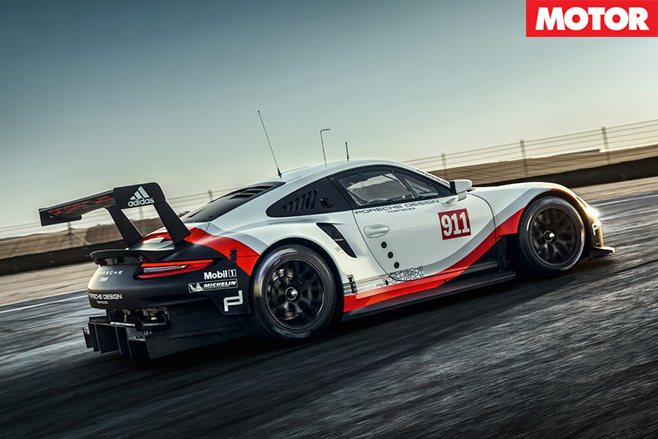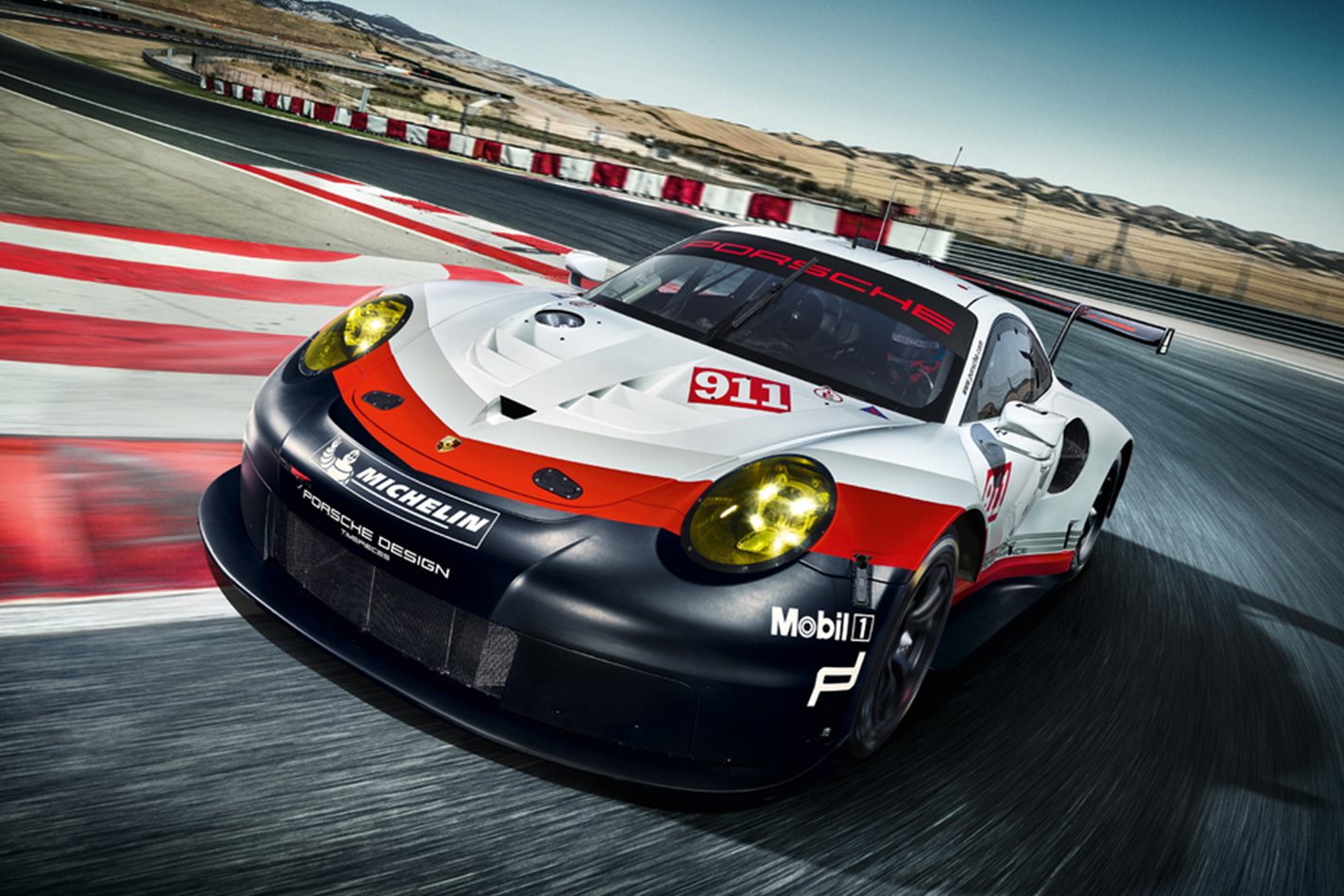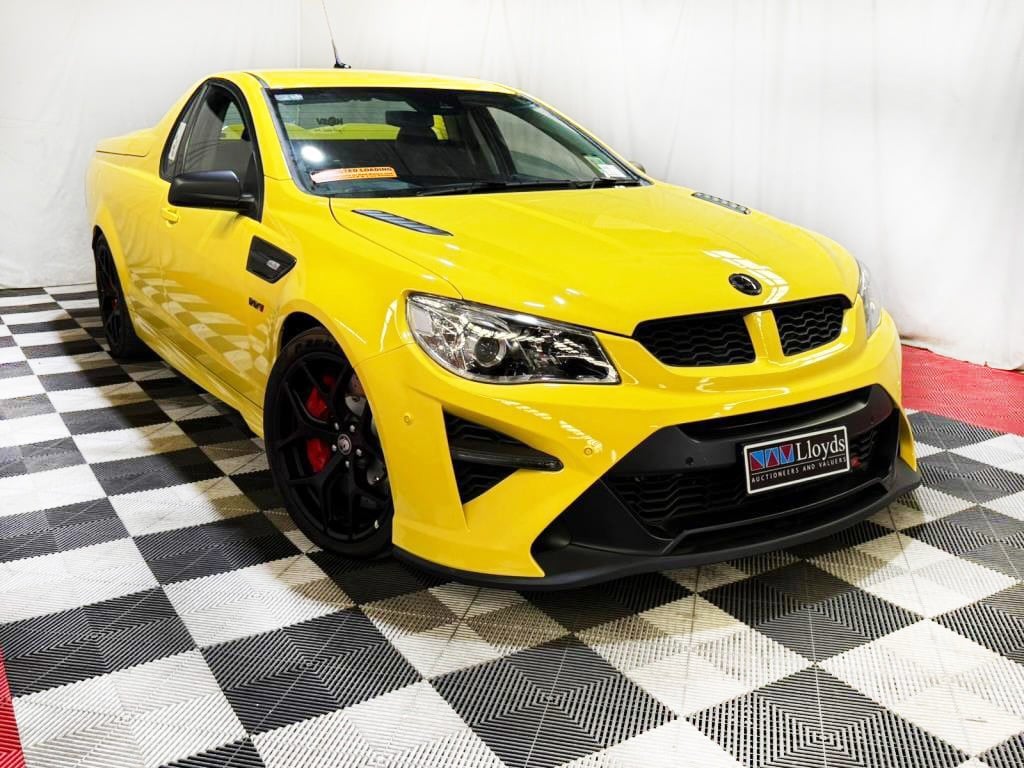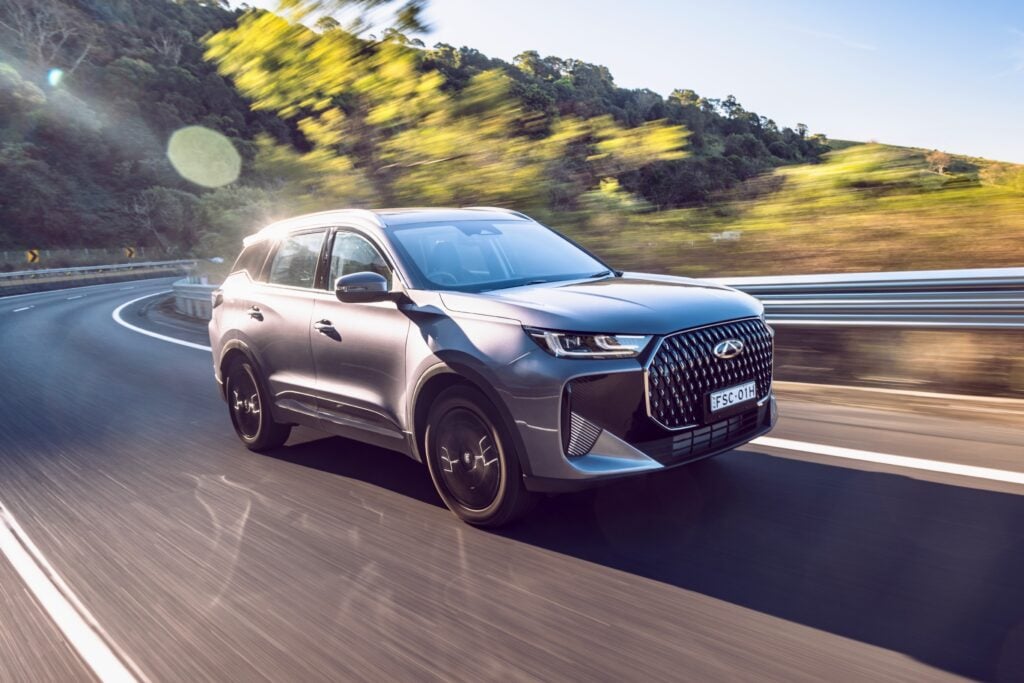Porsche has literally moved forward and unveiled a mid-engined 911 RSR racecar primed to seize victory back from new turbocharged rivals in the Le Mans 24 Hours GT category.
The German brand states that its “all-out newly developed GT racer … makes full use of the breadth of the Le Mans 24 Hours GT regulations” and that includes “the ultra-modern, flat-six unit positioned in front of the rear axle.”
“While retaining the typical 911 design, this is the biggest evolution by now in the history of our top GT model,” admits head of Porsche Motorsport, Dr Frank-Steffen Walliser.
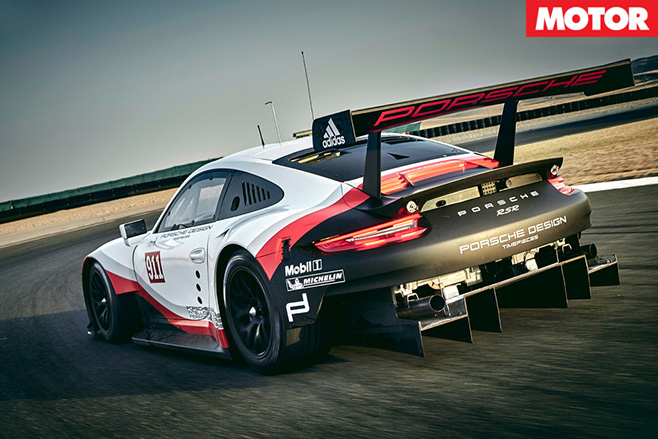
Porsche claims all components have been “designed from scratch” including the engine, (mostly carbonfibre) body structure, aerodynamics, adjustable double-wishbone front and rear suspension, and six-speed sequential transmission (with steering wheel shift paddles and three-disc carbon race clutch leading power to 310mm-wide Michelin rear slicks).
Four-wheel electro-hydraulic steering features and, in a sign of the times, the RSR even gets a radar-based collision warning system so that “even in the dark, the faster LMP prototypes are detected early enough and misunderstandings can be avoided.”
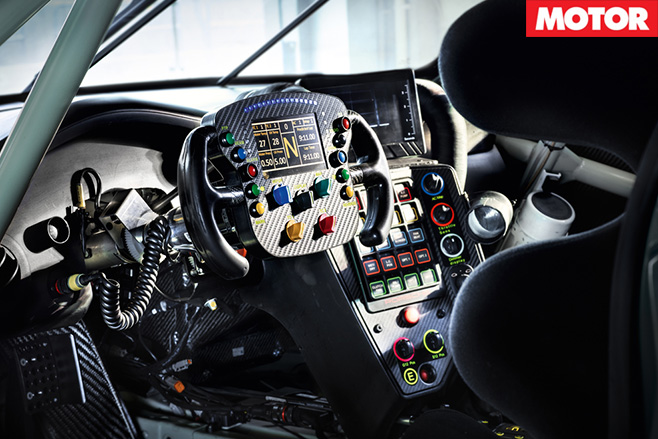
Although Porsche last won the LM-GTE Pro class at the 2013 Le Mans, was pushed to third the following year, fifth last year, and seventh this year behind the Ford GT (first place) and 488 GTE (second), the company is clear about sticking to natural aspiration.
“For the 911 RSR, we deliberately focused on a particularly modern and light normally-aspirated engine, as this gave our engineers immense latitude in developing the vehicle,” claims Dr Walliser.
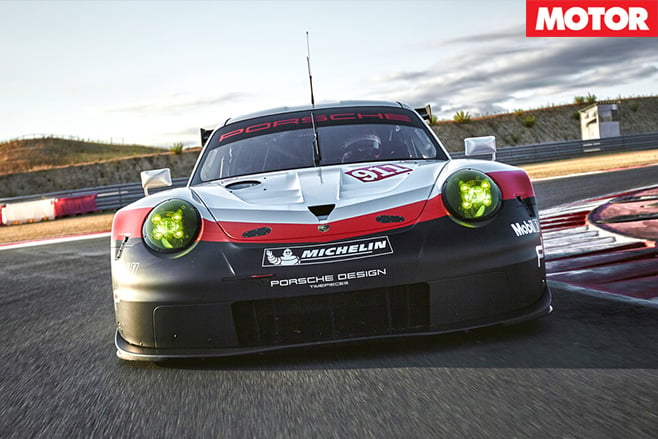
Porsche is no doubt hoping the mid-engined 911 RSR is its GT championship comeback kid – and follows the 2015/16 LMP1 class wins of the 919 Hybrid – when its two factory entries start racing in 2017. It claims the latest racecar has covered 35,000km in testing, more than any other Porsche GT model.
